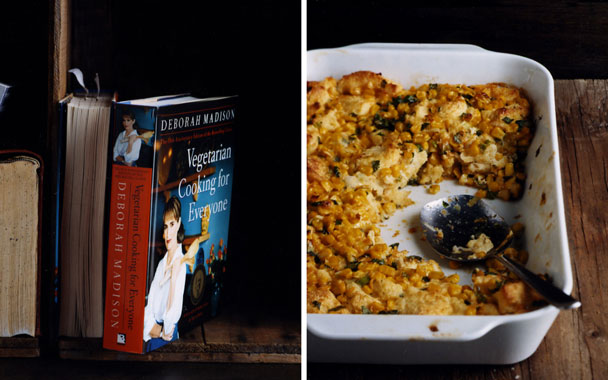Years before anyone coined the term locavore or slapped a “Good Source of Whole Grains!” sticker on a box of breakfast cereal, there was Deborah Madison. A contemporary of Alice Waters and the founding chef of Greens restaurant, in San Francisco, Madison has long been a quietly persuasive champion of mindful, healthful eating. Her monumental book Vegetarian Cooking for Everyone (Broadway Books; 742 pages; $40), originally published in 1997, was recently reissued in a special anniversary edition, and it is a shoo-in for any desert-island cookbook list. Its appeal lies right there in the title: This book is indeed for everyone, whether you want to put together a vegetarian menu or just need to figure out how to cook the pattypan squash you picked up at the farmers market and hope to serve with grilled chicken. But the book’s success lies within.
Before you even read a word, the clean type, elegant, well-organized layout, and helpful illustrations reassure you that you won’t be pulling your hair out trying to follow a recipe. And then Madison’s warm, knowledgeable prose pulls you in. Her recipe introductions and concise cooking instructions ring as clear and true as a dinner bell, and they make you want to eat. Now. (I defy you to read her sidebar on sandwich cheeses without hearing your stomach rumble.) Dishes like chilled mung-bean noodles with dulse and crushed peanuts and her Indian-style sauté of cauliflower and greens are so satisfying. They are also colorful and impressive, two adjectives most people don’t pin to vegetarian food.
Madison’s treatise on making vegetable stocks alone is worth the cost of the book. But there is much, much more. The chapter called “Vegetables: The Heart of the Matter,” for example, is a definitive guide to most garden-variety vegetables, from shopping to storing to cooking. Other chapters turn the same wise eye to beans, grains, and soy. While it’s a great resource for basic cooking methods, Madison’s book also includes recipes that dress up ingredients in all sorts of ways.
Her section on polenta, for instance, starts with a traditional slow-cooked version, then moves on to offerings such as a main-course gratin with tomato and Fontina and easy suggestions for polenta croquettes, golden cakes, and crisp croutons.
Over the years, my own copy has become as battered as a prizefighter, its contents dimpled with drops of quinoa chowder and streaked with turmeric and paprika. Practically every other page is dog-eared, reminding me of something luscious that I hope to make soon. (Empanadas with greens and olives, I’m looking at you.) I have opened the book so many times that its endpapers, decorated with cooking tips and a guide to basic ingredients, have ripped to reveal the binding. In the world of cookbooks, there’s no greater compliment.
- Selected recipes: (registration required)
- Bread Pudding with Corn
- Chilled Mung Bean Noodles with Dulse and Crushed Peanuts
- Fresh Herb Tart




 Pinterest
Pinterest






